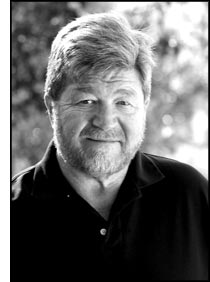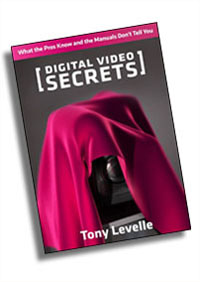The worlds of traditional authors and those of low-budget filmmakers are colliding at a rate that's truly mind-boggling.
 Filmmakers are using the short film genre to market themselves on YouTube and build a fan base, while writers are increasingly being asked to provide short videos with their articles and books. Books themselves may be changing from stacks of printed pages into a hybrid of text, hypertext, photographs and videos.
Filmmakers are using the short film genre to market themselves on YouTube and build a fan base, while writers are increasingly being asked to provide short videos with their articles and books. Books themselves may be changing from stacks of printed pages into a hybrid of text, hypertext, photographs and videos.
For writers, these changes are the biggest thing to happen since Gutenberg invented movable type and the printing press and for filmmakers they are the fruition of the democratization of filmmaking that started with the Avant-garde film movement of the early 20th century.
This month MicroFilmmaker magazine continues a series of articles that tell you how to get good video with any camera—from a $150 iPod Nano to a $5,000 prosumer camera. The articles are based on excerpts from Tony Levelle's book Digital Video Secrets.
Composition is the key to achieving powerful images
Secret 9 -- Four basic shots
Secret 10 -- Five basic camera angles
Secret 11 -- Use both objective and subjective views
Secret 12 -- Compose on the rule of 3rds
Secret 13 -- Perspective
Secret 14 -- Diagonal lines
Secret 15 -- Triangles
When I was in film school I decided to shoot my student film in 16mm film. At midnight. On location. In downtown San Jose. Thus violating at least four rules of sane filmmaking.
The heart of this complicated, hard to stage, student film was the robbery of a convenience store. I found a convenience store in a working-class neighborhood of San Jose, coordinated the staged “robbery” with the police department, auditioned actors, lined up a crew, and even rented a gun from a company that specialized in supplying weapons to film companies.

The night we filmed, everything went as planned, except for a fight in the parking lot. (The police broke it up--we kept going.) The shoot was strenuous, and exhilarating.
I slept late the next day. When I returned to school that afternoon, I met the kindly gray-haired man who taught lighting. He smiled and asked me, “Did you get pretty pictures?”
A few days later, we got the negatives back.
The images were, indeed, pretty. But they weren’t compelling or powerful. Without realizing it, I’d shot nearly every image from eye level. The overall effect was bland and indifferent.
All my work, money and time were wasted because I didn’t understand the power of camera placement and composition. I was so involved in the mechanics of staging the scene, and getting everything technically perfect that I overlooked composition.
I suddenly realized why the kindly film teacher was smiling. He knew I would be so overwhelmed by the challenges of setting up the complicated shoot that I would—just as hundreds of film students before me—overlook composition.
As a digital video filmmaker with a small crew and a smaller budget you may be in danger of falling into the same trap.
A properly composed image will evoke an emotional response in the audience. A properly composed image is more than pretty. It is compelling.